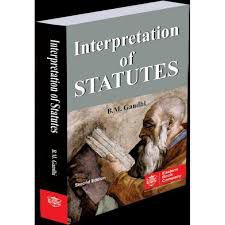Anti-competitive Agreements and the Competition Act, 2002
Competition Act, 2002, was enacted by Parliament of India to establish a
commission, to protect the interest of the consumers and guarantee freedom of
trade in markets in India-
· To prohibit the agreements or practices that restricts free trading and also
the competition between two business entities,
· To ban the abusive situation of the market monopoly,
· To provide the opportunity to the entrepreneur for the competition in the
market,
· To have the international support and enforcement network across the world,
· To prevent from anti-competition practices and to promote a fair and healthy
competition in the market.
But before Competition Act there was MRTP Act, The Monopolies and Restrictive
Trade Practices Act, 1969 which ensure that concentration of economic power in
hands of few rich. The act was there to prohibit monopolistic and restrictive
trade practices. It extended to all of India except Jammu & Kashmir.
The aims and objectives of this act were:
# To ensure that the operation of the economic system does not result in the
concentration of economic power in hands of few rich.
# To provide for the control of monopolies, and
# To prohibit monopolistic and restrictive trade practices.
Difference between MRTP Act and Competition Act:-
1. Meaning- MRTP Act is the first competition law made in India, which covers
rules and regulations relating to unfair trade practices. Whereas, Competition
Act, is implemented to promote and keep up competition in the economy and ensure
freedom of business.
2. Nature- MRTP Act is reformatory in nature. Whereas, competition Act is
punitive in nature.
3. Penalty- No penalty for offence under MRTP Act. Whereas, in Competition Act,
penalty is present.
4. Objective- MRTP Act controlled monopoly in the market. Whereas objective of
Competition Act is to promote competition.
Agreement Under Competition A
Section 3[1] of the Competition Act states about anti-competitive agreement,
there are two kinds of agreement under the Act-
1. Vertical
2. Horizontal
Agreement is defined under Section 2(b) of the Competition Act[2]. Agreement
is relating to production, supply, distribution, storage, acquisition or control
of goods or services which causes or is likely to cause an appreciable adverse
effect on competition in India shall be void. Agreement widely defined – even
a nod or a wink can suffice. It need not be written, covers oral
understandings as well. Direct proof of agreement not required, may be
conditional from facts, circumstantial evidence is enough.
Cartel is very important part of the same. Cartel includes an association of
producers, sellers, distributors, traders or service providers who, by agreement
amongst themselves, limit, control or attempt to control the production,
distribution, sale or price of, or, trade in goods or provision of services.
Cartel is a secret and not public, they work under the skin.
In the case of Indian Foundation of Transport Research and Training v. Shri Bal
Malkait Singh and Ors[3]- AIMTC had directed its members to uniformly increase
the truck freight (by -15%) due to increase in price of diesel, thereby harming
consumers and causing an AAEC in the market. CCI Order: Held that the similarity
of the press reports by the AIMTC’s President and its spokesperson respectively
indicated that there was a meeting of minds amongst the members of the AIMTC to
fix/increase the freight rates consequent upon the hike in diesel prices. The
CCI additionally held that the agreement had an appreciable adverse effect on
competition.
Horizontal Agreement
Section 3(3) of the Act states that- Any agreement entered into between
enterprises or associations of enterprises or persons or associations of persons
or between any person and enterprise or practice carried on, or decision taken
by, any association of enterprises or association of persons, including cartels,
engaged in identical or similar trade of goods or provision of services, which—
(a) Directly or indirectly determines purchase or sale prices;
(b) Limits or controls production, supply, markets, technical development,
investment or provision of services;
(c) Shares the market or source of production or provision of services by way of
allocation of geographical area of market, or type of goods or services, or
number of customers in the market or any other similar way;
(d) Directly or indirectly results in bid rigging or collusive bidding, shall be
presumed to have an appreciable adverse effect on competition.[4]
There is direct or indirect determination of prices, it is between competitiors
presumed and anti-competitive. Sharing of
• Prices,
• Input costs,
• Price/cost components,
• Profit margins,
• Cost structure and price calculation,
Atypical cartel- also known as HUB and SPOKE- is the exchange of sensitive
information between competition and third party. There is no direct cartel and
they channelize themselves through hub.
Adverse effect on Competition Commission of India-
· Price signalling- wherein there is signal from a cartel to another.
· Oligopoly Market- there is Tacit Collusion, which means price signalling with
the knowledge that competitor, is likely to follow similar trend.
For instance, exchange of prices between two suppliers through a common
distributor.
Cases of cartel that are considered worst form of anticompetitive conduct also
fall under Section 3(3) of the Act. Direct evidence in the form of a specific
agreement in terms of fixing the prices etc. would not be available, therefore
the authorities rely upon circumstantial and indirect evidence to come to a
conclusion on the existence of an agreement between parties, In the Cement
Cartel Case, the Hon’ble CCI has held that existence of the agreement can be
inferred from the intention and conduct of the parties ad that the parallel
behaviour in price is indicative of a coordinated behaviour amongst the
participants in the market.
The Hon’ble CCI has identified but for test in the Cement Cartel Case wherein
it held that but for: some anticompetitive conduct between the parties the
action and conduct of the parties cannot be explained. CCI has also viewed that
price parallelism amongst the price of cement across the country is not
reflective of the oligopolistic market and in light of the fact that the details
relating to the cement companies was facilitated through the association, the
price parallelism was indicative if a co-ordinated behaviour under Section 3(3)
of the Act.
California produces 60% of wine in the entire United States, in case there is
bad growth of grapes the State intervene in order to regulate the price of the
same. It is also known as Political Doctrine.
Exchange of other types of information (apart from prices) may also be
problematic, such as:
v Strategic information,
v Business plans,
v Production /sales details,
v Capacity details, and
v Expansion plans.
v Information exchange is especially problematic in oligopolistic and
concentrated markets.
Exchange of sufficiently historic data is unlikely to create anticompetitive
effects. Exchange of genuinely aggregated data, i.e. where recognition of
company level information is difficult, should not raise concerns.
Noerr–Pennington doctrine, private entities are immune from liability under the
antitrust laws for attempts to influence the passage or enforcement of laws,
even if the laws they advocate for would have anticompetitive effects.
Petitioning is immune from liability even if there is an improper purpose or
motive. The doctrine is grounded in the First Amendment protection of political
speech, and upon recognition that the antitrust laws, 'tailored as they are for
the business world, are not at all appropriate for application in the political
arena.'
There is exception for the same which has been stated under Section 19(3) of the
Competition Act:-
The Commission shall, while determining whether an agreement has an appreciable
adverse effect on competition under section 3, have due regard to all or any of
the following factors, namely:[5]
(a) Creation of barriers to new entrants in the market;
(b) Driving existing competitors out of the market;
(c) Foreclosure of competition by hindering entry into the market;
(d) Accrual of benefits to consumers;
(e) Improvements in production or distribution of goods or provision of
services;
(f) Promotion of technical, scientific and economic development by means of
production or distribution of goods or provision of services.
Certain Key Issues under Horizontal Agreements:
1. Limiting production or supply
All decisions on increase or decrease of production, sales or capacity, entry
into new markets, capacity utilization etc. should be taken independently. Any
agreement/understanding on the above between competitors may raise concerns. It
is best to keep a record of independent business reasons for any decisions
regarding the same.
2. Market sharing
There should not be any formal or informal agreement or understanding with
competitors in relation to sharing of territories / products. Competitors must
not agree not to target each other’s customers (regardless of the size of these
customers).
3. Bid-rigging
Any agreement…which has the effect of eliminating or reducing competition for
bids or adversely affecting or manipulating the process for bidding. Common
forms of bid rigging:
• Bid suppression,
• Complementary bidding,
• Bid rotation,
• Agreements not to bid against each other or squeeze other bidders,
• Agreements on common terms or pricing formulae.
A.R. Polymers Case[6] - the COMPAT overturned the CCI decision on the grounds
that CCI and the DG failed to give due weightage to the nature of the market for
jungle boots, manner in which the tender is conducted, and execution of the rate
contract to arrive at finding of bid rigging solely on the grounds of identical
pricing.
Factors which may not mitigate liability:
• Success or failure of a cartel.
• Normal practice in the industry.
• Ignorance of the law.
• The agreement /understanding between parties not being in writing.
• The practice occurring through a trade association.
• Remaining silent in a meeting where an anti-competitive practice took place.
• Not leading but merely following others in the practice.
Vertical Agreements
Vertical agreements are agreements that are entered amongst enterprise or
persons at different stages of the production chain say for e.g. an agreement
between an input supplier and a manufacturer of a product using the input or
agreements between principals and dealers etc. These are agreements that operate
at different levels of trade.
Section 3 of the Clayton Act governs inter-brand restraints involving the sale
of goods. And, Section 2 of the Sherman Act governs restraints entered by
monopolists.
The difference between Horizontal and Vertical Agreements is that in Horizontal
Agreements there is same level of competition whereas in Vertical Agreement
there is different level of competition.
Section 3(4) states that any agreement amongst enterprises or persons at
different stages or levels of the production chain in different markets, in
respect of production, supply, distribution, storage, sale or price of, or trade
in goods or provision of services, including:
(a) Tie-in arrangement;
(b) Exclusive supply agreement;
(c) Exclusive distribution agreement;
(d) Refusal to deal;
(e) Resale price maintenance,
Shall be an agreement in contravention of sub-section (1) if such agreement
causes or is likely to cause an appreciable adverse effect on competition in
India.[7]
Essential ingredients of Section 3(4) are:-
# There must exist an agreement amongst enterprises or persons,
# Parties to such agreement must be at different stages or levels of production
chain, and
# The agreement should cause or should be likely to cause an AAEC( adverse
effect on competition).
Different kinds of vertical agreements:
A. Tie-In Arrangement- it includes any agreement requiring a purchaser of goods,
as a condition of such purchase, to purchase some other goods. It involves
wherein there exists a seller who agree to sell desirable product or service
which are tying the product only on pre-condition that buyer shall purchase a
less desirable second product or service, i.e. the tied product irrespective of
the fact that whether the buyer wants the second product or not. It is a
agreement with a condition that party will sell the product only on the
condition that buyer will also buy another product. In re. Godrej and Boyce Mfg.
Co. Pvt. Ltd.[8], the burden of proof is one the plaintiff who institutes the
claim per se violation to prove that:-
· The seller conditioned the sale of ne product or service on the purchase of
second.
· That the two products or services are two separate products that they are not
parts of the same product.
· That the seller has sufficient position on the market for tying the product to
enforce it.
In Apple Case: Necessary Ingredients-
Presence of two separate products or services capable of being tied,
Seller: sufficient economic power in tying good to restrain competition in tied
good, and
Tying arrangement affects a not insubstantial amount of commerce.
Fx Enterprises v. Hyundai Motor India Limited[9]
Allegations: Hyundai entered into exclusive supply agreements and refusal to
deal arrangements with its distributors. Further, by prescribing maximum
permissible discounts to its dealers, it was alleged that it was engaging in
resale price maintenance. Additionally, it was alleged that it tied sale of CNG kits, lubricants, oils and car insurance.
CCI Order:
No exclusive supply or refusal to deal since the agreement only required dealers
to take prior permission from Hyundai prior to dealing with competitors. Hyundai
had never refused permission as no one had approached.
The Discount Control Mechanism amounted to RPM. AAEC found as it restricted
intra-brand and inter-brand competition. CCI also noted that RPM could be used
as a mechanism to monitor cartels and hub-and-spoke arrangements
Tying found in the case of oil/lubricants
B. Exclusive Supply Agreements- Exclusive supply agreement includes any
agreement restricting in any manner the purchaser in the course of his trade
from acquiring or otherwise dealing in any goods other than those of the seller
or any other person. For instance, if a dealer/distributor is prohibited from
dealing with goods of the suppliers’ competitors. Exclusive supply agreements
have been held to be permissible, where objectively justified - such as to
protect from free riding, to ensure safety of investment and ensure quality of
supplies.
In the Intel Case - the CCI held that a requirement to inform the supplier when
the distributor deals with products belonging to the supplier’s competitors
cannot amount to an exclusive supply arrangement.
C. Exclusive Supply Agreements- exclusive distribution agreement includes any
agreement to limit, restrict or withhold the output or supply of any goods or
allocate any area or market for the disposal or sale of the goods.
Bajaj Case: Bajaj was allocating areas of business to all its dealers – found to
be an exclusive dealership agreement under Section 3(4)(c) of the Act – however,
no AAEC found, therefore, no violation.
Spare Parts Case: Agreement between OEM and local OESs preventing latter from
supplying to the aftermarket – found to violate Section 3(4)(c).
D. Refusal To Deal- refusal to deal includes any agreement which restricts, or
is likely to restrict, by any method the persons or classes of persons to whom
goods are sold or from whom goods are bought.
Spare Parts Case: agreement between OEM and local OESs preventing latter from
supplying to the aftermarket – also held to amount to a refusal to deal.
Fx/Hyundai Case: No case of refusal to deal where distributor only had to take
prior permission from supplier, before dealing with competitor’s products, and
permission had never been denied.
E. Resale Price Maintenance- resale price maintenance includes any agreement to
sell goods on condition that the prices to be charged on the resale by the
purchaser shall be the prices stipulated by the seller unless it is clearly
stated that prices lower than those prices may be charged.
Fx/Hyundai Case: restrictions imposed on maximum permissible discount that could
be given by a dealer to customers – held to be RPM.
Intel: where a supplier merely provided a suggested price to the distributor as
a guideline, and distributors were thereafter free to decide the resale price,
no case of
Shri Shamsher Kataria v. Honda Siel Cars India Ltd. & Ors[10] - Violations of
Section 3 and 4
Allegations: Car manufacturers had entered into anti-competitive agreements with
their Original Equipment Suppliers (OESs) and authorised dealers, restricting
sale of spare parts and tools in the open market. It was further alleged that
the car manufacturers were abusing their dominant position by restricting the
OESs from supplying their spare parts in the open market.
CCI Order on Section 3:
# Car manufacturers restrict OESs from supplying the parts they manufacture
using car manufacturer designs/drawings.
# Car manufacturers prevent unauthorised dealers from sourcing spare parts from
OESs.
# CCI held that where enterprises are dominant, it would adopt a stricter
approach while assessing vertical agreements.
# Penalty: 2% of average turnover for the last three years, which amounted to
approximately USD 422 million. Also ordered onerous behavioral remedies.
Leniency Programme-
It gives incentive to people who tell about cartel. Leniency programme is a type
of whistle-blower protection, i.e. an official system of offering lenient
treatment to a cartel member who reports to the Commission about the cartel.
Competition authorities have framed various leniency programmes to encourage and
incentivize various actors connected with the commission of such competition
infringements to come forward and disclose such anticompetitive agreements and
assist the competition authorities in lieu of immunity or lenient treatment.
A
Leniency programme is a protection to those who come forward and submit
information honestly, who would otherwise have to face stringent action by the
Commission if existence of a cartel is detected by the Commission on its own. It
is based on the principle of fair competition for greater good.
| United States | India/ United Kingdom |
| Only the first entity can avail leniency programme. | Anyone of the entities can avail the leniency programme. |
| First entity gets immunity. | They may get immunity. |
| The other face prosecution, i.e. damages, which is three times the damages caused in the market. | Penalty is charged. |
Conclusion
The Act aims to prevent practices by parties that are anti-competitive or
harmful for the market. It can ensured when there is freedom of trade and
protect the interest of all the parties. This aim cannot be followed unless
cartels are removed and all the principles in the Act is followed. It is
important for the parties while doing business in India to keep a check on
retaining any anti-competitive element in the agreements between them.
Enterprises should be proactive and diligent to identify the existing
anti-competitive elements from their current agreements. There must be training
programme for better understanding of the implications of anti-competitive
agreements and how to avoid that.
Bibliography
Books:
· Competition Law in India- Abir Ro and Jayant Kumar
Websites:
· http://www.ssrana.in/Intellectual%20Property/Competition%20Law/Anti-Competitive-Agreements-in-India.aspx
· http://www.mondaq.com/india/x/250048/Trade+Regulation+Practices/AntiCompetitive+Agreements+Tests+And+Tribulation
Acts:
· The Monopolies and Restrictive Trade Practices Act, 1969
· Competition Act, 2002
End-Notes
[1] http://www.cci.gov.in/sites/default/files/cci_pdf/competitionact2012
[2] http://www.cci.gov.in/sites/default/files/cci_pdf/competitionact2012
[3] No. 61 of 2012, 16 February 2015
[4] http://www.cci.gov.in/sites/default/files/cci_pdf/competitionact2012
[5] http://www.cci.gov.in/sites/default/files/cci_pdf/competitionact2012
[6] Appeal No. 34 of 2013, 12 April 2016
[7] http://www.cci.gov.in/sites/default/files/cci_pdf/competitionact2012
[8] RTP Enquiry 6/1978
[9] Case No. 36 and 82 of 2014, 14 June 2017
[10] Case No 60 of 2014, 9 December 2016
Law Article in India
Legal Question & Answers
Lawyers in India - Search By City
LawArticles
How To File For Mutual Divorce In Delhi

How To File For Mutual Divorce In Delhi Mutual Consent Divorce is the Simplest Way to Obtain a D...
Increased Age For Girls Marriage

It is hoped that the Prohibition of Child Marriage (Amendment) Bill, 2021, which intends to inc...
Facade of Social Media

One may very easily get absorbed in the lives of others as one scrolls through a Facebook news ...
Section 482 CrPc - Quashing Of FIR: Guid...

The Inherent power under Section 482 in The Code Of Criminal Procedure, 1973 (37th Chapter of t...
The Uniform Civil Code (UCC) in India: A...

The Uniform Civil Code (UCC) is a concept that proposes the unification of personal laws across...
Role Of Artificial Intelligence In Legal...

Artificial intelligence (AI) is revolutionizing various sectors of the economy, and the legal i...








Please Drop Your Comments